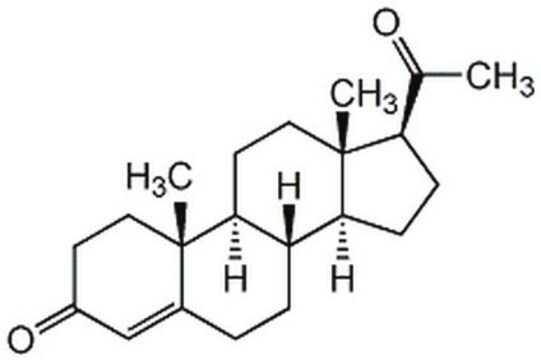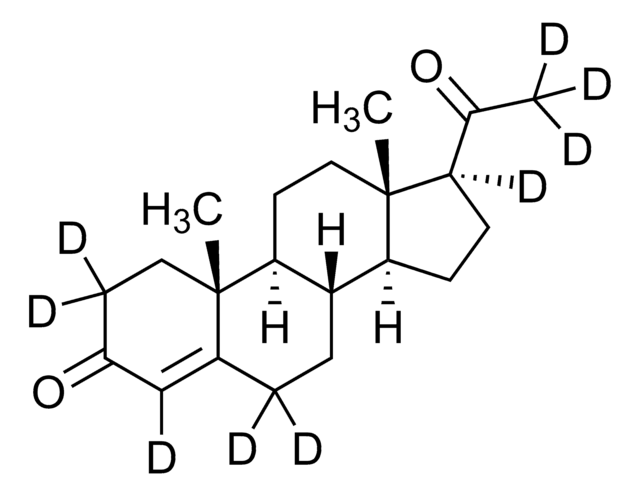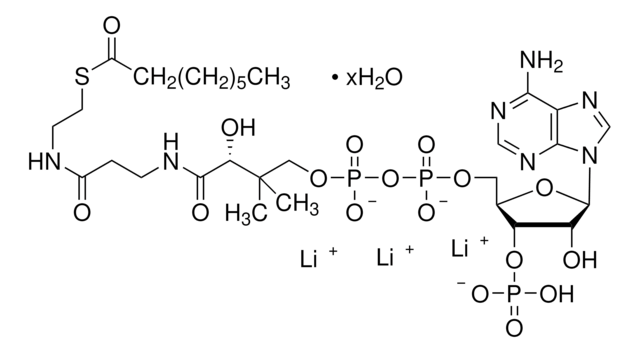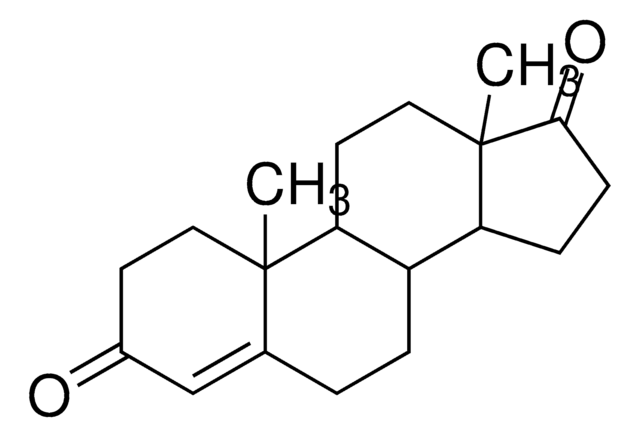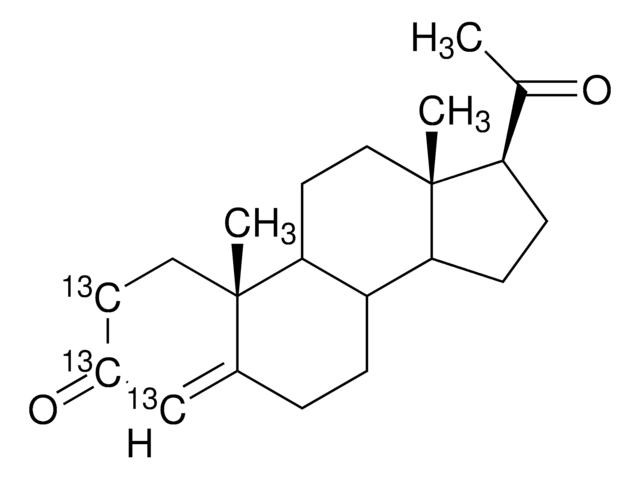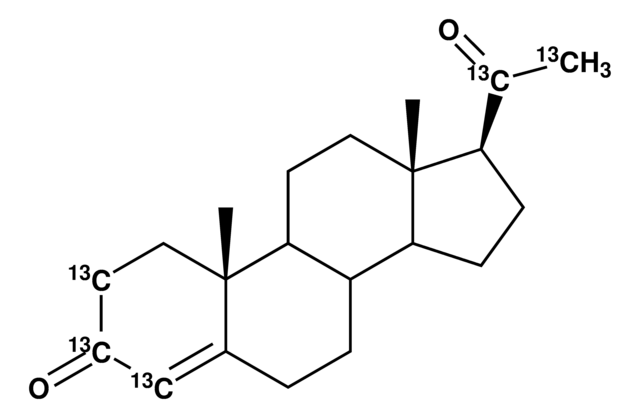P-069
Progesterone solution
1.0 mg/mL in acetonitrile, ampule of 1 mL, certified reference material, Cerilliant®
About This Item
Produits recommandés
Qualité
certified reference material
Niveau de qualité
Forme
liquid
Caractéristiques
Snap-N-Spike®/Snap-N-Shoot®
Conditionnement
ampule of 1 mL
Fabricant/nom de marque
Cerilliant®
Concentration
1.0 mg/mL in acetonitrile
Technique(s)
gas chromatography (GC): suitable
liquid chromatography (LC): suitable
Application(s)
clinical testing
clinical testing
Format
single component solution
Température de stockage
−20°C
Chaîne SMILES
CC(=O)C1CCC2C3CCC4=CC(=O)CCC4(C)C3CCC12C
InChI
1S/C21H30O2/c1-13(22)17-6-7-18-16-5-4-14-12-15(23)8-10-20(14,2)19(16)9-11-21(17,18)3/h12,16-19H,4-11H2,1-3H3/t16-,17+,18-,19-,20-,21+/m0/s1
Clé InChI
RJKFOVLPORLFTN-LEKSSAKUSA-N
Informations sur le gène
human ... PGR(5241)
Application
- Progesterone Residue Analysis in Milk: A study developed a method using a metal-organic framework (UiO-67) to enrich and purify progesterone residues in milk, demonstrating a significant advancement in food safety and hormone residue analysis. This application is crucial for ensuring compliance with safety standards and understanding progesterone′s environmental impact (Shang et al., 2022).
- Steroid Profiling in Serum: Research on semi-automated serum steroid profiling with tandem mass spectrometry highlights the role of progesterone solutions in developing precise bioanalytical methods. This technique is essential for clinical diagnostics and pharmacokinetic studies, offering detailed insights into hormonal balance and its clinical implications (Rakete et al., 2023).
- Cancer Research: A cheminformatics analysis incorporated progesterone to assess breast cancer hazards, evaluating how certain chemicals influence estrogen and progesterone synthesis. This research is pivotal for understanding carcinogenic risks associated with hormonal changes, aiding in the development of targeted cancer therapies (Borrel and Rudel, 2022).
Informations légales
Produit(s) apparenté(s)
Mention d'avertissement
Danger
Mentions de danger
Classification des risques
Acute Tox. 4 Dermal - Acute Tox. 4 Inhalation - Acute Tox. 4 Oral - Eye Irrit. 2 - Flam. Liq. 2
Code de la classe de stockage
3 - Flammable liquids
Classe de danger pour l'eau (WGK)
WGK 2
Point d'éclair (°F)
35.6 °F - closed cup
Point d'éclair (°C)
2 °C - closed cup
Certificats d'analyse (COA)
Recherchez un Certificats d'analyse (COA) en saisissant le numéro de lot du produit. Les numéros de lot figurent sur l'étiquette du produit après les mots "Lot" ou "Batch".
Déjà en possession de ce produit ?
Retrouvez la documentation relative aux produits que vous avez récemment achetés dans la Bibliothèque de documents.
Les clients ont également consulté
Protocoles
The conversion of clinical methods to LC/MS/MS offers advantages; however, is accompanied by a few limitations, notably interference effects from the endogenous sample matrix.
Notre équipe de scientifiques dispose d'une expérience dans tous les secteurs de la recherche, notamment en sciences de la vie, science des matériaux, synthèse chimique, chromatographie, analyse et dans de nombreux autres domaines..
Contacter notre Service technique

